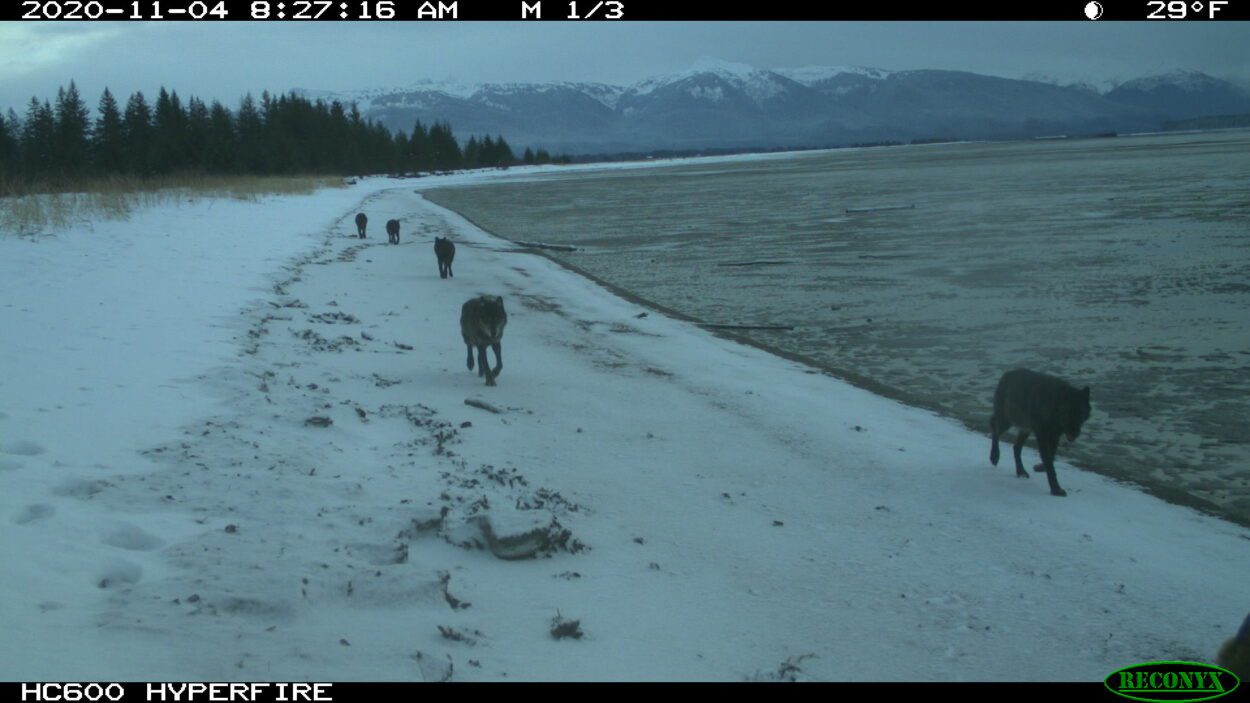
Southeast Alaska’s wolves tend to favor deer and moose at mealtime, but in a pinch they won’t say no to black bear – or even sea otter. A study – now in its eighth year – has found a remarkably diverse diet among the region’s wolf population. Although scientists use GPS collaring and other technology in their work, many of their conclusions are drawn from a large and growing collection of scat.
CoastAlaska’s Angela Denning reports:
Petersburg has had a small pack of wolves hanging around the outskirts of town this year. Several residents have zoomed in with their cell phones to capture individual wolves here and there. On social media, a few people said the wolves were stalking them. Others revere the sightings.
Biologists have seen the pack on game cameras and think it’s a pair with three yearling pups.
“Anybody been lucky enough to see the wolves hanging around behind the airport?” said Frank Robbins, the area management biologist for the Alaska Department of Fish and Game, speaking at a public presentation in August.
This Mitkof Island pack is part of a gray wolf subspecies known as the Alexander Archipelago wolf. They’re specific to Southeast Alaska and tend to be smaller and darker in color than their mainland counterparts.
Robbins and other biologists hope this close-to-town pack is an opportunity to learn more about local wolves. They’ve successfully collared a black male in the pack and hope to get others.
They use padded spring traps that capture the wolf by the foot.
“We’ll have signs up anywhere where we would put a trap,” Robbins said. “Of course, we wouldn’t put a trap anywhere where folks are out walking their dogs or where people are likely to encounter a set.”
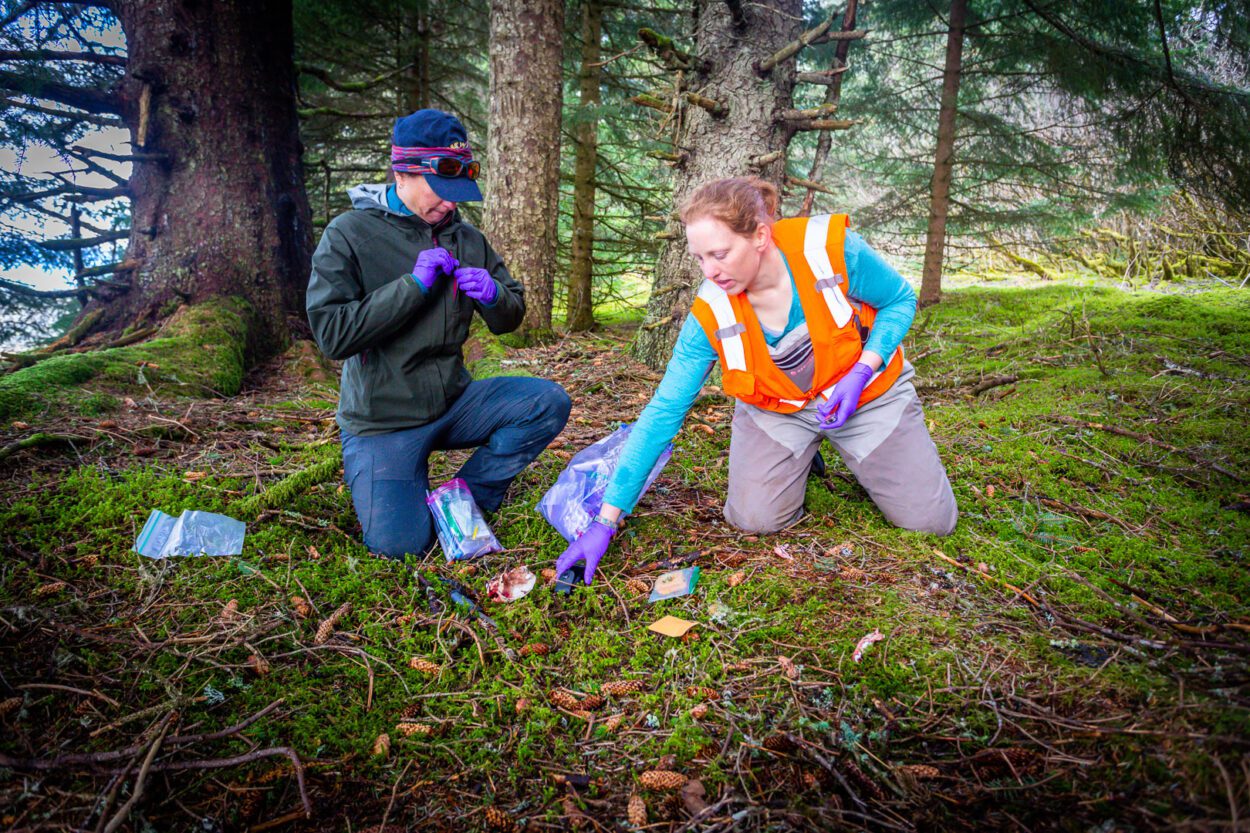
The collaring project near Petersburg is part of a much larger study in Southeast led by wolf biologist, Gretchen Roffler. She’s been studying wolves in the region for eight years to find out their eating habits and range.
“Southeast Alaska is a very large and diverse landscape with different prey combinations available on these island groups and on the mainland,” Roffler said. “So for example, some islands have deer as the primary prey, whereas others have both deer and goats or deer and moose.”
To gather data, they’ve collared wolves from five different wolf packs.
In the process, they collect information like age, weight, and if the wolf is one of the reproductive pair of the pack. They also take blood and hair samples for studying genetics and diseases. Then they wait. If the wolves hang out in a certain location for more than a few hours, it could be a kill site. And then the scientists move in.
“So we’re traveling to these sites by all possible means, by hiking on foot by skiff by kayak. Sometimes we use helicopters to get close to the site and then hike in,” Roffler said. “And once we’re there, we scour the ground to look for prey carcasses, or parts of the carcasses.”
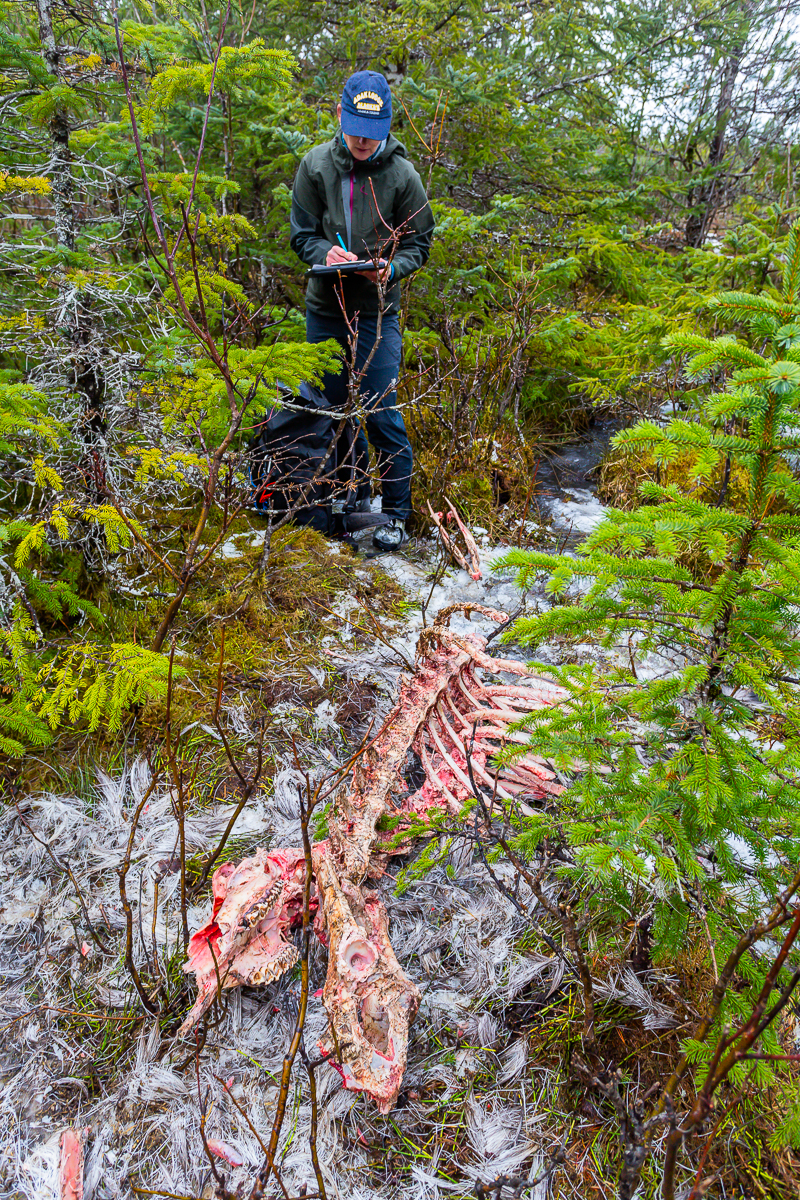
They’ve studied over 200 sites so far and learned that heavy snowfall is good for wolves—it slows down prey and the wolves scavenge moose that have starved. Wolves also eat seasonally, sometimes focusing on salmon in streams during the summer. But hooved animals are their favorite.
“Wolves really tend to focus on the ungulates that they have available in their area, you know, be it deer or moose or goats,” said Roffler.
And they’ve found that Southeast wolves have dozens of “alternate prey” species.
Roffler and her helpers are also collecting wolf scat — lots of it — over 2,000 samples. And with that, they’ve identified over 60 different prey species. Combining those findings with the kill sites, they’ve learned that wolves eat beaver, porcupine, marmot, adult black bear, brown bear cubs, even invertebrates off the beach. This alternative prey varies by location.
“So in places like Prince of Wales wolves consumed beaver and black bear,” Roffler said. “On Kuiu Island, wolves also consumed black bear. And then places like Gustavus and Pleasant Island that are close to protected areas like Glacier Bay National Park, they are consuming sea otters.”
That’s right… sea otters.
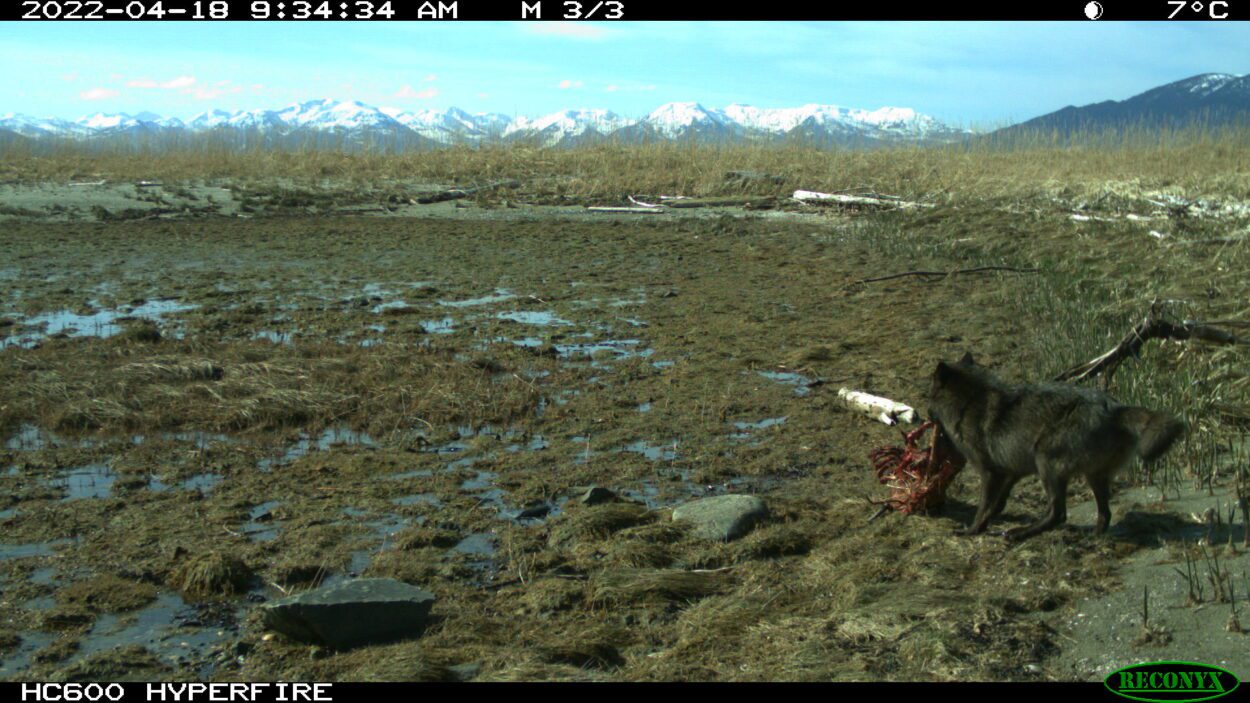
“So far, I have found 31 sea otter carcasses killed by wolves,” Roffler said.
Roffler is working on publishing a paper based on these sea otter hunts, which she’s personally observed.
The Southeast wolves have been surrounded by debate in recent years with some environmental groups seeking federal protection of the subspecies and some local hunters seeking more harvest of the wolves for eating too many deer.
Roffler says she tries to stay away from the controversy and is just interested in the science.
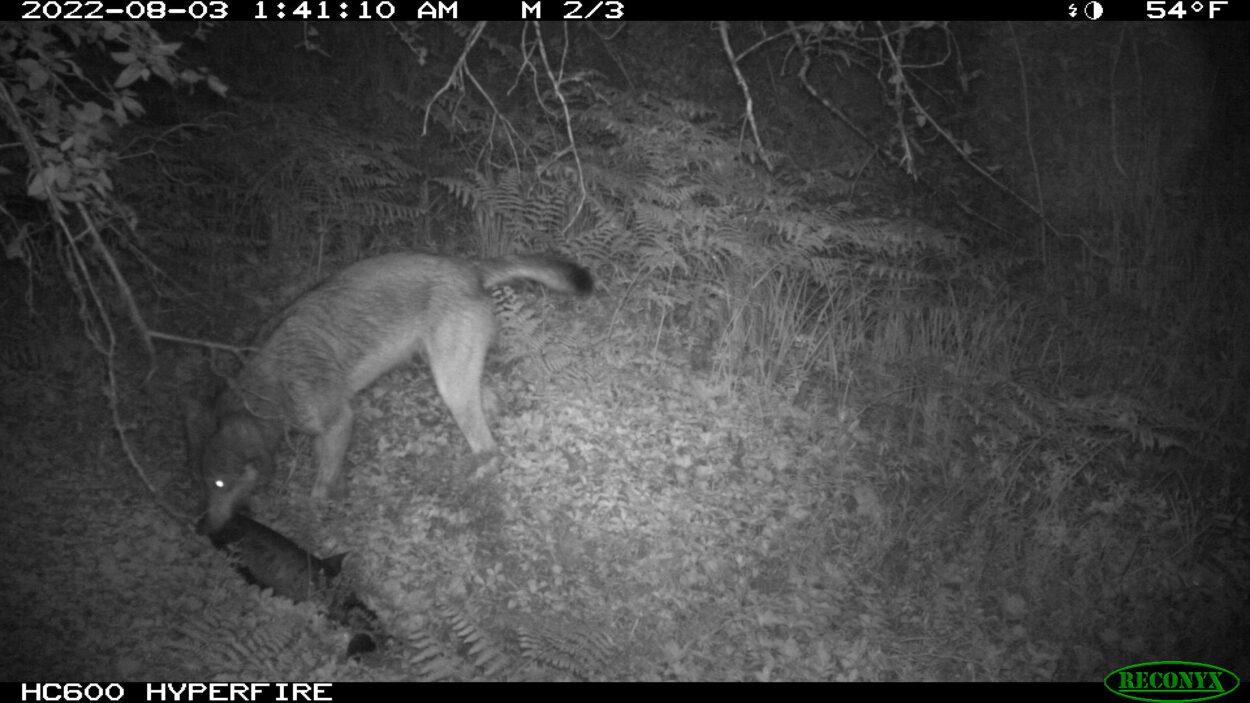
Here is information on Roffler’s diet study focusing on scat from 2010-2018.
Here are more photos from her earlier scat study.
Here is information on Roffler’s wolf study focusing on range from 2012-2016.









